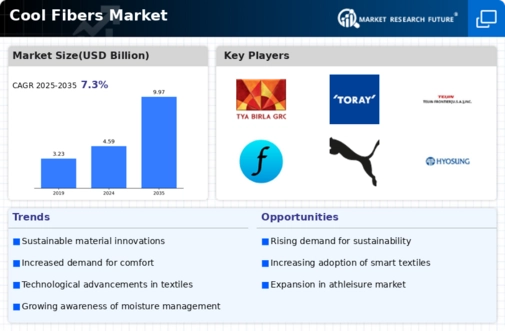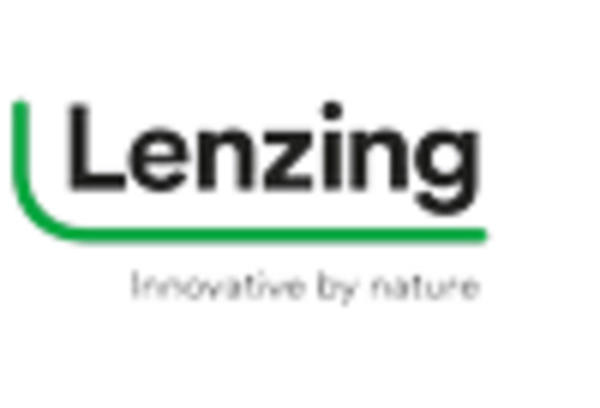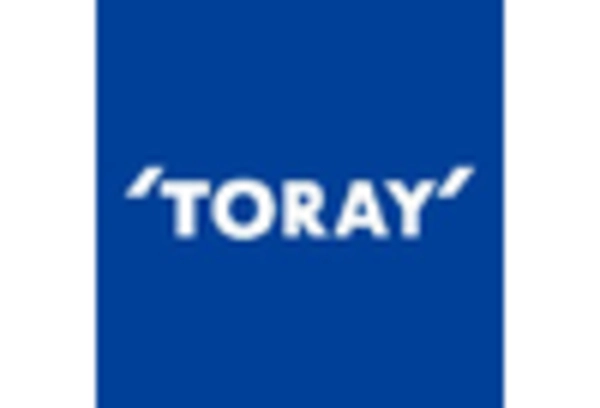E-commerce Growth
The expansion of e-commerce platforms is transforming the Cool Fibers Market. Online shopping provides consumers with access to a wider range of products, including specialized cool fibers that may not be available in traditional retail outlets. This shift is particularly relevant as more consumers prefer the convenience of online purchasing. Data suggests that e-commerce sales in the apparel sector are expected to grow by 20% annually, further emphasizing the importance of digital channels for reaching consumers. As a result, the Cool Fibers Market is likely to see increased sales through online platforms.
Fashion Industry Dynamics
The dynamics of the fashion industry are evolving, impacting the Cool Fibers Market. Fast fashion trends and the demand for quick turnaround times are pushing manufacturers to innovate in fiber production. This environment encourages the development of cool fibers that are not only stylish but also functional. The market for innovative textiles is projected to grow significantly, driven by consumer preferences for unique and versatile fabrics. As fashion brands increasingly seek to differentiate themselves, the Cool Fibers Market is poised to experience growth through the introduction of novel fiber technologies.
Technological Innovations
Technological innovations play a pivotal role in shaping the Cool Fibers Market. Advancements in fiber technology, such as moisture-wicking and temperature-regulating properties, are becoming increasingly prevalent. These innovations cater to the growing demand for high-performance textiles, particularly in sports and outdoor apparel. The market for smart textiles, which integrate technology into fabric, is expected to reach USD 5.5 billion by 2026. This surge indicates a robust interest in functional fibers, suggesting that technological advancements will continue to drive growth within the Cool Fibers Market.
Health and Wellness Trends
The rising focus on health and wellness significantly impacts the Cool Fibers Market. As consumers prioritize fitness and active lifestyles, there is a growing demand for performance-oriented fabrics that enhance comfort and functionality. This trend is reflected in the increasing popularity of athleisure wear, which combines style with practicality. The activewear segment is projected to reach USD 350 billion by 2025, indicating a substantial market opportunity for cool fibers that offer breathability and moisture management. Consequently, the Cool Fibers Market is likely to benefit from this health-conscious consumer behavior.
Sustainability Initiatives
The Cool Fibers Market is increasingly influenced by sustainability initiatives. Consumers are becoming more environmentally conscious, leading to a demand for eco-friendly materials. This shift is evident as brands adopt sustainable practices, such as using recycled fibers and reducing water consumption in production. According to recent data, the market for sustainable textiles is projected to grow at a compound annual growth rate of 9.7% through 2027. This trend not only aligns with consumer preferences but also encourages manufacturers to innovate in fiber production, thereby enhancing the overall appeal of the Cool Fibers Market.


















Leave a Comment